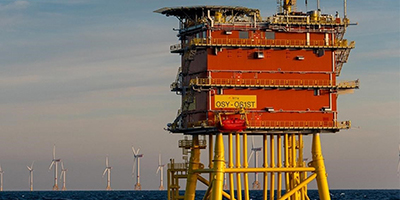04 January 2023
Machine learning to optimize the success rate of offshore maintenance voyages
Elia is responsible for managing the MOG OSY platform, which transmits power from 4 offshore windfarms totaling 1 GW of capacity.
Why this project
This task requires regular maintenance of the platform, for which Elia crew must travel to the platform by air (via helicopters) or sea (via CTVs Crew Transfer Vessels). These journeys are not without risk, and some trips to the platform were unsuccessful, meaning the crew ultimately did not reach the platform.
Approach
The AI Center of Excellence, together with the Offshore team in Belgium, set out to build a tool to recommend the optimal time to make a trip to the platform. To do this, we use past data of the local weather conditions and historical daily progress reports (DPRs) recorded by the team. This past data is used to train a machine learning model that advises the team whether the weather conditions will lead to a successful trip out to the platform. An experienced member of the crew still makes the final decision as to whether or not to make the final voyage. This additional advice from the model helps save both time of the crew not having to go out on voyages that are ultimately not successful, as well as the money lost from unsuccessful voyages.

-
Data Preparation and Analysis
First, the data had to be extracted from the daily progress reports, which were stored in Microsoft Word files. This step involved working closely with the colleagues from the Offshore team to understand the reports. The weather data also needed to be prepared.
Once the data was ready, the team spent time analyzing the data to see if there were recognizable patterns that lead to platform approach failures, visualizing the main factors influencing voyage success, such as wave height.
-
Model Training and Evaluation
Multiple machine learning models were then trained using the prepared and analyzed data. This step proved difficult given the limited number of past failures on which to train the model. Finally, the best-preforming model was put to the test against a real expert from the offshore team. The model showed fewer “false positive” errors than the Elia crew member, which in this case means an error where the model said the trip would be a success, when in fact it was not successful.




